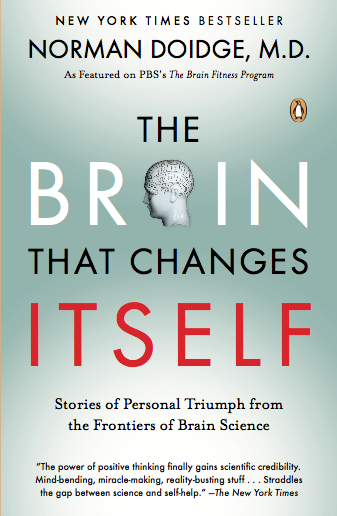


February 2010
In this Issue:
|
Say
It Quick |
Discoveries bits of serendipity to inspire and motivate |
Ideas fuel for your own continuous learning |
Activities tips and tricks you can try today |
| Culture Crash | Think Plastic | Brain Culture | Rearrange Your Brain |
Learn about the way your brain controls your mind - and, beginning with this 99-Word story, the unexpected consequences that might result.
Culture Crash
After two years of driving in the congested, chaotic traffic of Ecuador, my
wife could not adjust to the traffic patterns at home. The high speed weaving
and dodging that was an effective strategy abroad was downright dangerous
in the US. Behind the wheel, she found it difficult to change her habits.
Here was a reminder of how easily we adopt the culture we find ourselves in. With enough exposure, nearly any behavior becomes "normal."
Do we make conscious decisions about the cultural elements that surround us? Do we shape organizational culture or let ourselves be shaped?
 Think
Plastic
Think
Plastic
Your brain is plastic. It's not made of plastic, of course, but it behaves
as if were. That's the term author Norman
Doidge repeatedly uses in his book, The Brain That Changes Itself,
to talk about the amazing physical adaptations the human brain makes. By plastic,
Doidge means that our brains can easily and quickly adapt to new demands.
And those adaptations happen physically, on the cellular level, resulting
in new neurons and ever more intricate synaptic connections between them.
This plasticity accounts for the brain's ability to recover functions that have been lost as a result of a stroke or other injury. But plasticity also accounts for the difficulty we experience in trying to change a bad habit because habits are literally molded into the very structure of our brain. Doidge gives equal evidence for both the positive and negative effects of brain plasticity.
Plasticity in Action:
"Imagining an act engages the same motor and sensory programs that are involved in doing it. … Each thought alters the physical state of your brain synapses at a microscopic level." p. 212
In one organization, workers who support people who are blind live with their eyes cut off from all light during their training period. In as little as one week's time, their occipital lobes show evidence of rewiring to take on other functions.
People who have had a stroke are often able to retrain their brains so that some of the processing of the damaged area is distributed to other areas of the brain.
Physical exercise actually creates brain stem cells. Learning helps new neurons live longer. Combine exercise and learning and you have a recipe for promoting brain health into old age. P. 253
Watch a lot of TV and your brain will rewire itself to adapt to the abrupt changes that have been written into the TV programming to occur several times a minute. For young children especially, this results in symptoms similar to Attention Deficit Disorder.
 On
one hand, it's not surprising why we behave certain ways. We know that old
habits are hard to break, that if you surround yourself with negativity you'll
become a more negative thinker, and that if you really want to learn something
well, you have to practice. But this book gives a physiological reason for
these experiences. It explains that all of our experiences create changes
in the cellular structure of our brain and that those physical changes, because
they affect our emotions, memories, and perceptions, actually begin to change
our reality.
On
one hand, it's not surprising why we behave certain ways. We know that old
habits are hard to break, that if you surround yourself with negativity you'll
become a more negative thinker, and that if you really want to learn something
well, you have to practice. But this book gives a physiological reason for
these experiences. It explains that all of our experiences create changes
in the cellular structure of our brain and that those physical changes, because
they affect our emotions, memories, and perceptions, actually begin to change
our reality.
The book is The Brain that Changes Itself by Norman Doidge, M.D. Penguin Books, 2007. ISBN 978-0-670-03830-5.
Brain Culture
One principle Doidge often refers to is the "use-it-or-lose-it"
quality of the brain. This means that whether we are talking about neuronal
connections or whole areas of the brain, whatever is used becomes stronger.
If an area or connection is not used for a particular function, it will be
"lost" to that function and used for something else. Similarly, if we put
more energy into using certain connections or brain areas, they will become
stronger and even more specialized for that purpose.
 An
interesting example of this is the sum total of our world view, or culture.
We create our culture as a people but as individuals, we learn our culture
from family, friends, society, and so forth. Our brains create culture but
culture also molds and creates our brain. Doidge explains that when people
were asked to recall pictures of undersea wildlife, those from individualistic
cultures talked about specific fish and what they did. People from collectivistic
cultures described groups of fish and how they interacted with the whole environment.
In addition, each group used a different region of their brain to describe
what they were recalling. Individualistic and collectivistic cultures actually
wire the brain to see the world a certain way.
An
interesting example of this is the sum total of our world view, or culture.
We create our culture as a people but as individuals, we learn our culture
from family, friends, society, and so forth. Our brains create culture but
culture also molds and creates our brain. Doidge explains that when people
were asked to recall pictures of undersea wildlife, those from individualistic
cultures talked about specific fish and what they did. People from collectivistic
cultures described groups of fish and how they interacted with the whole environment.
In addition, each group used a different region of their brain to describe
what they were recalling. Individualistic and collectivistic cultures actually
wire the brain to see the world a certain way.
As we learn a culture, we teach our brain to see the world a very specific way and our brain responds by changing its structure. It then becomes a finely tuned instrument for interpreting the world from that cultural perspective. As long as you stay in your own culture, you'll be fine. But in a new culture, what was once adaptive can become counterproductive or even dangerous! This month's 99-Word story is a case where my wife had been so successful at molding her brain for Ecuador that she had trouble making a reconnect for the U.S. format.
For another example of the challenges involved in reprograming one's brain for another culture, see the February/March 2009 issue of the Firefly News Flash. If it reminds you of your own challenges in personal brain restructuring, please !
Rearrange
Your Brain
The function of an arm or leg muscle is to move your body. Muscles grow by
doing what they do best: moving. The function of your brain is to think. It
grows by doing what it does best: thinking.
Here's a game to grow your brain by challenging culturally wired assumptions. CAN YOU EXPLAIN IT? is based on assumptions, judgements, and our tendency to hold onto our first conclusion about a situation rather than testing for alternative explanations.
This is how we'll play. I'll give you an observation in the form of a statement. You think of an explanation for it. Then click to get the answer and your score. As you play, see if you can stretch your synaptic connections to invent answers that are more varied and inventive while staying within generally accepted standards of reality (no Klingons or paranormal phenomena, please!)
CAN YOU EXPLAIN IT?
Observation #1: A married woman goes to a single man's apartment two nights of every week for three hours. What's your explanation? Click for your score.
Observation #2: Two police officers visit your next-door neighbor's house. What's your explanation? Click for your score.
Observation #3: A person smelling of stale liquor is buying aspirin at 6 a.m. What's your explanation? Click for your score.
Observation #4: When you get home you find your brother's car is dented in on the right side. What's your explanation? Click for your score.
Observation #5: You see a man chasing a woman down an alley. What is your explanation? Click for your score.
Observation #6: A teenager carrying a heavy backpack runs out the door of a convenience store. What's your explanation? Click for your score.
Observation #7: Two clean-cut young men wearing dark slacks and white shirts ring your doorbell. What's your explanation? Click for your score.
Observation #8: It's dinnertime and the phone rings. A pleasant person on the line asks for you but mispronounces your name. What's your explanation? Click for your score.
Observation #9: Last week a mechanic fixed the vibration in your car's front end. Now you feel the vibration again. What's your explanation? Click for your score.
Observation #10: Your boss and the director of personnel are moving boxes out of your friend's office. What's your explanation? Click for your score.
Observation #11: You are driving down the street when a car in a side driveway suddenly cuts in front of you. What's your explanation? Click for your score.
Observation #12: You're sitting in the airport waiting for a flight. When you reach for your newspaper, the person next to you is reading it. What's your explanation? Click for your score.
How well did you score, and more importantly, what did you learn?
Did you enjoy playing CAN YOU EXPLAIN IT? Did you rearrange any brain cells? If so, and help me rearrange some of mine!
Read previous
issues. Click Archives!
To add or delete your name to our mailing list, email
with a short note in the subject line.
We want this newsletter to be practical, succinct, and thoughtful. If you have suggestions about how we can meet these criteria, please let us know! Send us an with your thoughts and ideas.
Home
| Services
| Products
| Mission
| Ideas |
The Group
| The Buzz
(c)
2005 The Firefly Group